Unlock the secret to juicy, fall-off-the-bone baby back ribs in the oven with one trick to seal in moisture and bring out unbelievable flavor!
This post may contain affiliate links. If you click on a link and make a purchase, I may receive a small commission at no extra cost to you. For more information, please read my disclaimer.
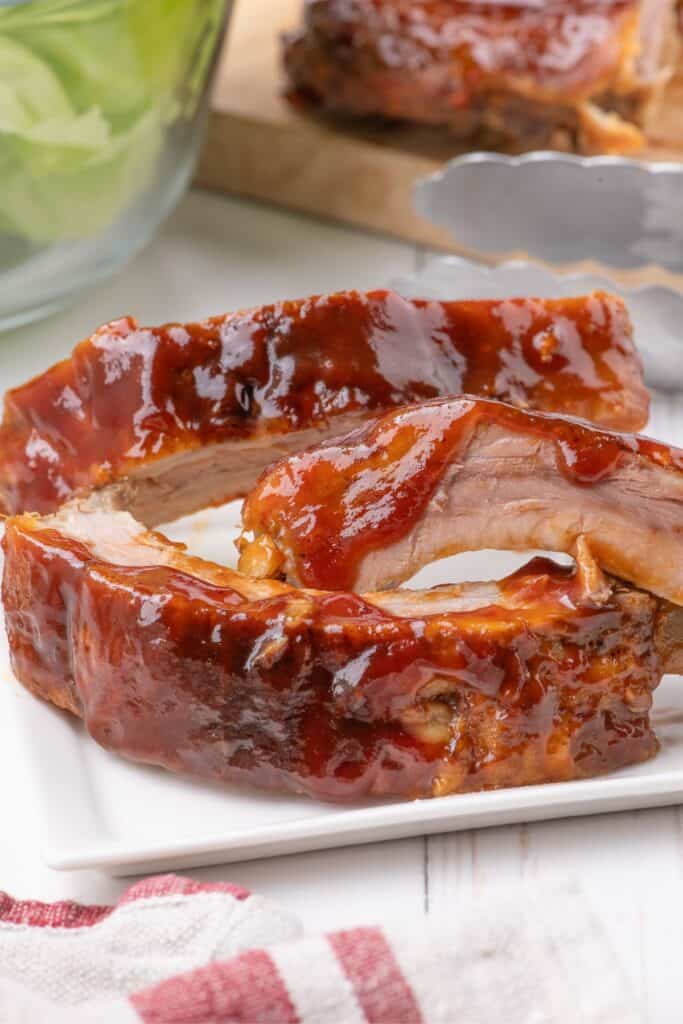
Ever wondered how to keep those oven-baked baby back ribs from drying out? The trick is all in how you wrap them!
The key is to use the right amount of tin foil to form a tight seal around the rack. This lets the ribs cook low and slow in their own juices, making them unbelievably tender and delicious!
This method also infuses every bite with spices and BBQ sauce. So you can say goodbye to tough, dry meat and hello to succulent, fall-off-the-bone baby back ribs packed with flavor!
You’ll love this Baby Back Ribs Oven recipe
- Simple prep
- Easy spice rub with pantry-staple seasonings
- Use your favorite BBQ sauce
- Prep your sides while the ribs bake
- Super tender baby back ribs
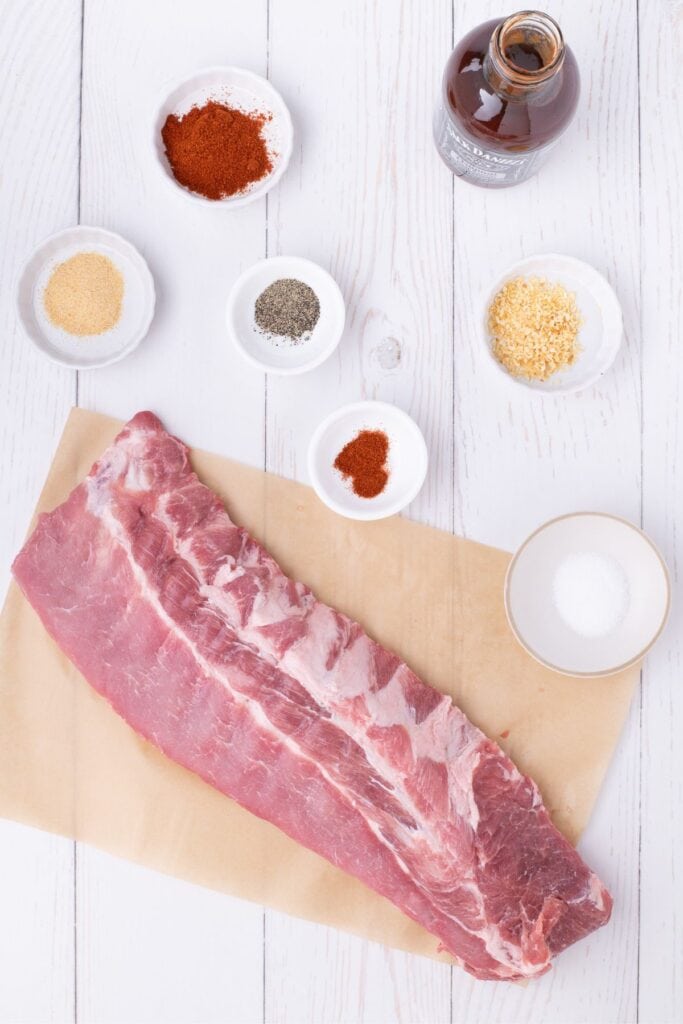
Ingredients for Oven Baked Baby Back Ribs
- Baby back pork rib rack
- Seasoning — smoked paprika, garlic powder, granulated onion, and cayenne
- Salt and pepper
- BBQ sauce
Helpful equipment for Cooking Baby Back Ribs in the Oven
- Baking sheet
- Heavy duty tin foil
- Silicone brush
- Meat thermometer
How to Make Oven Baked Baby Back Ribs
A full printable version of this recipe with ingredient measurements is available at the bottom of this post.
STEP ONE: Preheat your oven to 350 degrees F. In a small bowl, mix together the smoked paprika, salt, garlic powder, granulated onion, black pepper, and cayenne pepper. Set aside.
STEP TWO: Pat the rack of ribs dry with a paper towel.
STEP THREE: From the underside of the rib rack, remove the membrane by slowly peeling it back using a paring knife (or other small knife).
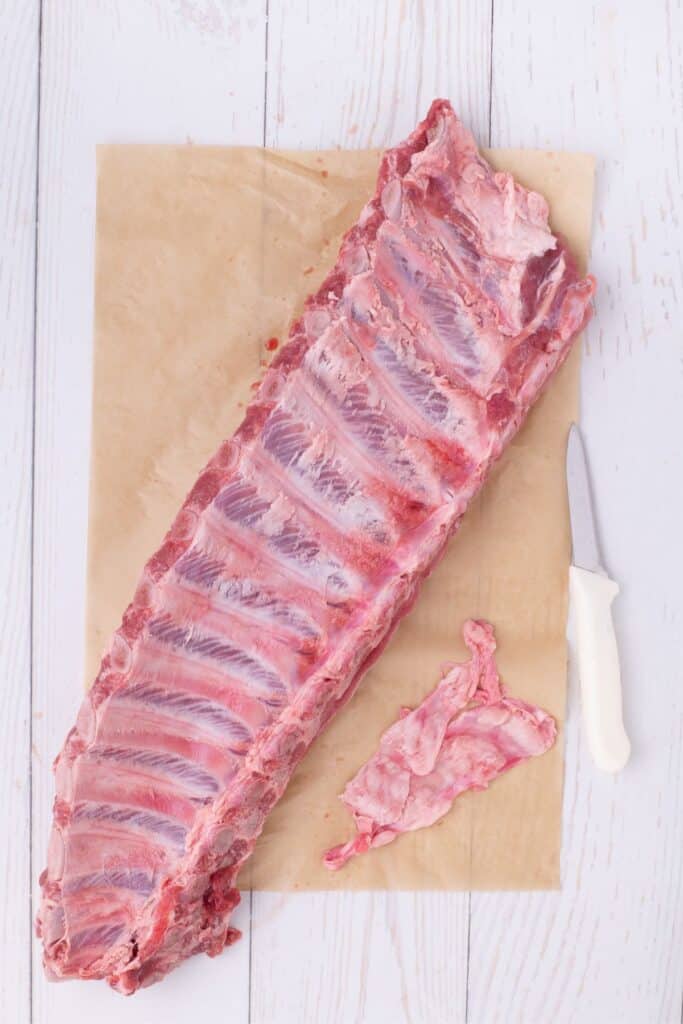
STEP FOUR: Sprinkle the spice mixture over the top and bottom of the rack, rubbing it into the meat to make sure all surfaces are covered.
STEP FIVE: Line an 11 x 17-inch baking sheet with heavy-duty tin foil one and a half times the length of the rack of ribs.
STEP SIX: Place the rib rack in the center of the foil and fold over the four edges to form a seal.
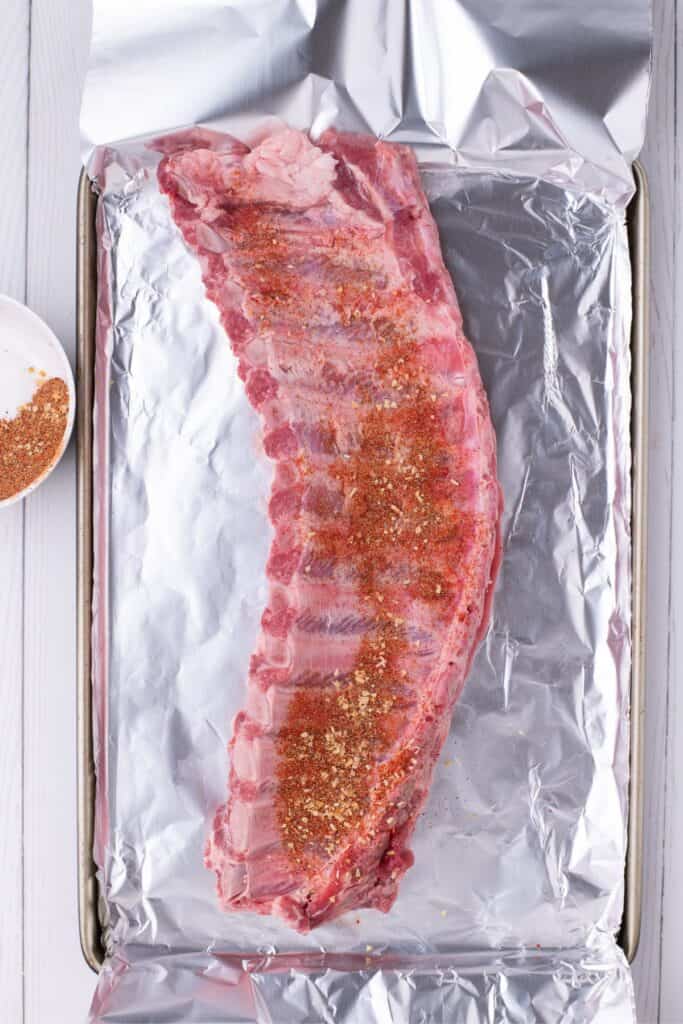
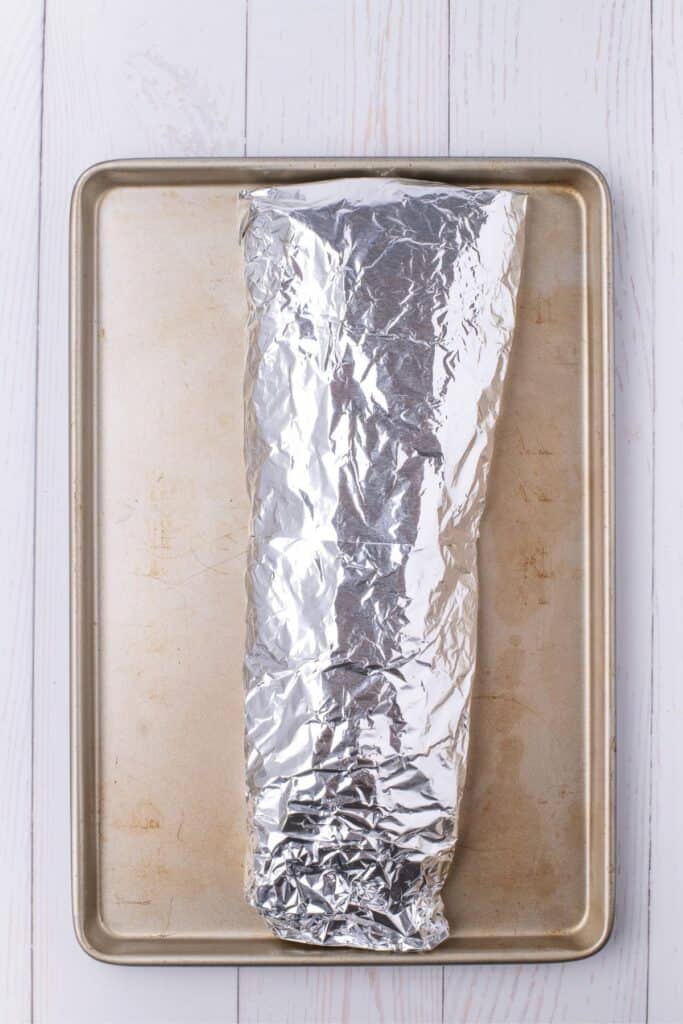
STEP SEVEN: Place the baking sheet on the center rack in the oven and bake for 2 hours or until an internal temperature reading shows 190 degrees F to 200 degrees F.
STEP EIGHT: Remove the baking sheet from the oven, open up the tin foil packet, and liberally brush barbecue sauce over the tops of the ribs.
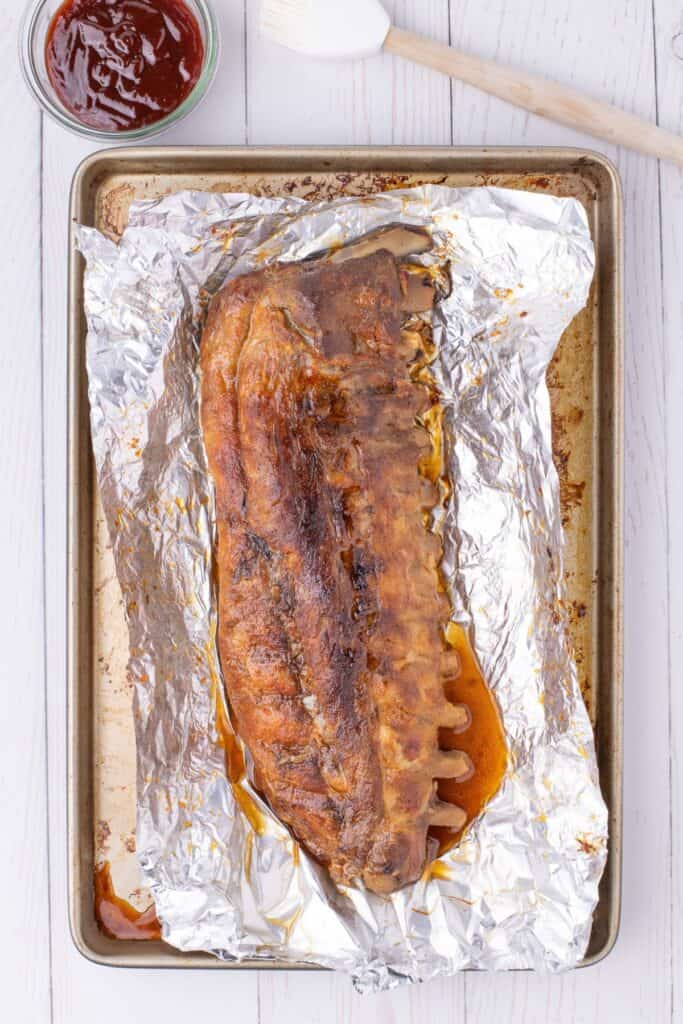
STEP NINE: Place the ribs back into the oven (uncovered) and bake for an additional 5 minutes until nicely browned.
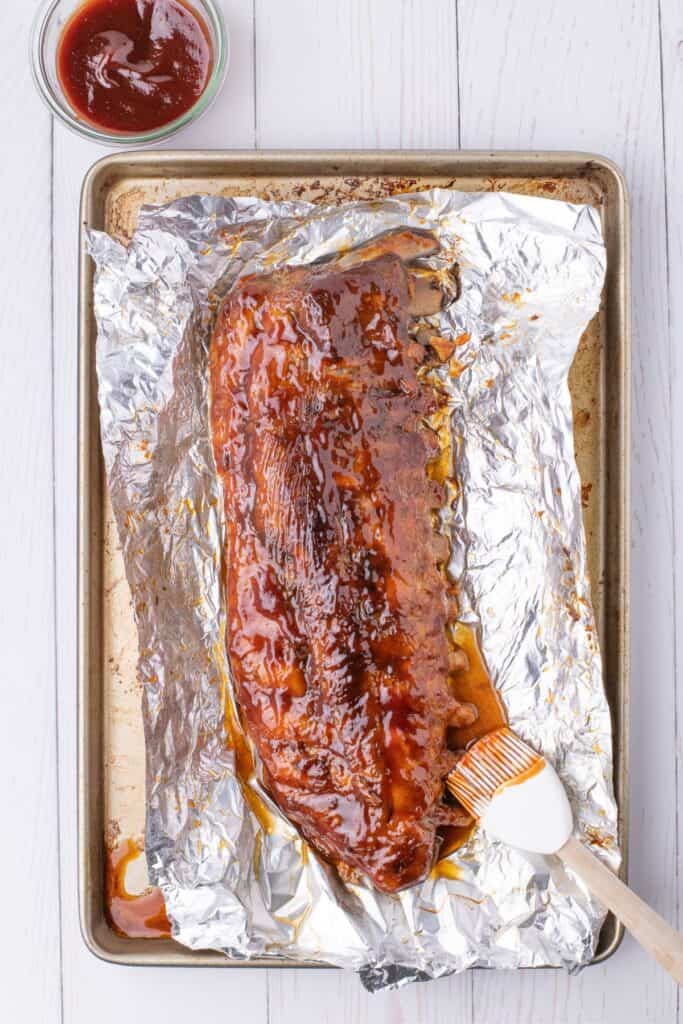
STEP TEN: Transfer the rib rack to a cutting board and cut it into single-rib portions.
STEP ELEVEN: Slather ribs with additional BBQ sauce if desired.
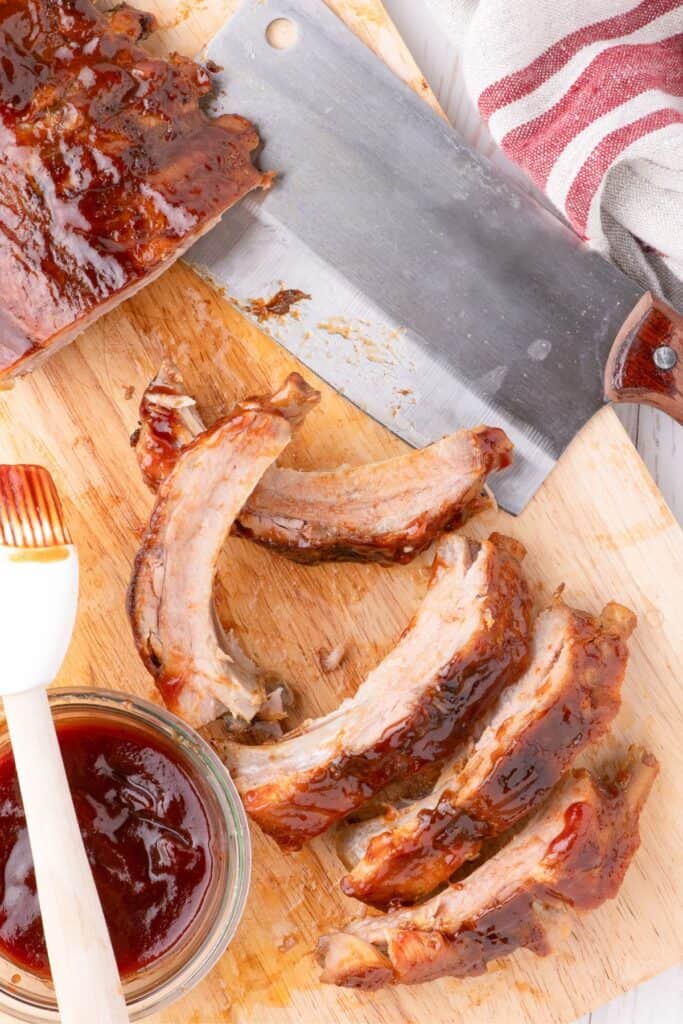
Baby Back Ribs Oven Recipe Variations
- Increase the cayenne for ribs with a spicy kick.
- Use homemade BBQ sauce instead of a store-bought bottle.
- Add fresh rosemary or thyme to the spice mix for an aromatic twist.
- Brush the ribs with a honey glaze before the last 5 minutes of baking for a sweet and sticky exterior.
- Add lemon or orange zest to the rub for a bright, zesty flavor that balances the richness of the meat.
Tips for Cooking Baby Back Ribs in the Oven
- Remove the membrane to allow the spice mix to fully coat all sides of the ribs.
- Rub the spice mix into the ribs as evenly as possible for maximum flavor.
- Seal the tin foil tightly, making sure there are no exposed areas of meat to prevent the ribs from drying out.
- Use a meat thermometer to ensure the ribs cook to 190 degrees F to 200 degrees F in the tin foil.
- Brush BBQ sauce over the ribs before the final few minutes of baking to add a caramelized finish.
- Let the ribs rest for a few minutes before slicing to lock in all those juices.
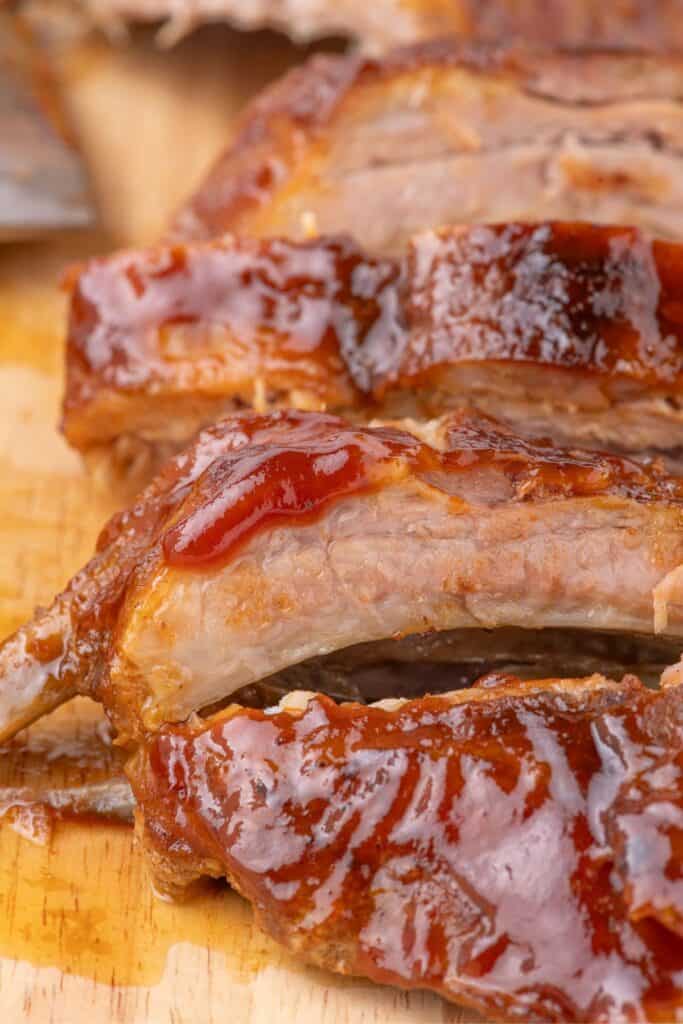
What to Serve With Oven Baked Baby Back Ribs
For super easy sides the whole family will love, try air fryer garlic knots or waffle fries in the air fryer.
If you want to add some veggies to the mix, I recommend air fryer potatoes and onions, cream jalapeno corn, or stovetop candied sweet potatoes!
Baby Back Ribs in Oven storage
Leftover ribs keep beautifully in the fridge for up to 5 days. Wrap them tightly or store them in an airtight container.
You’ll have delicious ribs ready to reheat whenever the craving strikes!
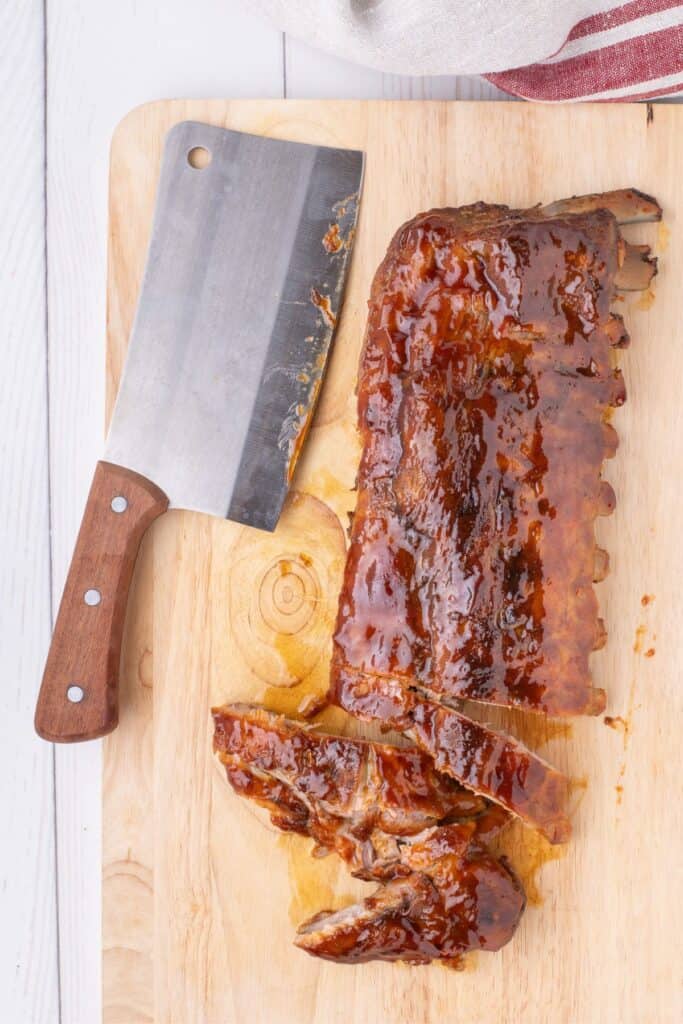
How to Reheat Oven Baked Baby Back Ribs
- Preheat the oven to 250 degrees F.
- Brush more BBQ sauce over the ribs if desired.
- Wrap in tin foil.
- Heat in the oven for 15-20 minutes.
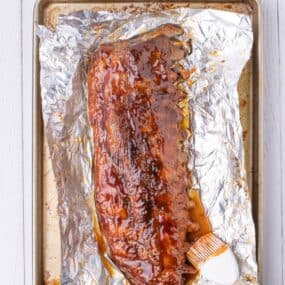
Oven Baked Baby Back Ribs
Equipment
Ingredients
- 2 1/2 to 3 pounds baby back pork ribs
- 2 teaspoons smoked paprika
- 1 teaspoon salt
- 1 teaspoon garlic powder
- 1 teaspoon granulated onion
- 1/2 teaspoon black pepper
- 1/8 teaspoon cayenne
- 1 bottle BBQ sauce
Instructions
- Preheat the oven to 350 °F. To make the spice mixture, in a small bowl mix together the smoked paprika, salt, garlic powder, granulated onion, black pepper, and cayenne pepper. Set aside.
- Rinse the rack of ribs and pat dry with a paper towel.
- From the underside of the rib rack, remove the membrane by slowly peeling it back using a pairing knife (or other small knife).
- Sprinkle the spice mixture over the tops and bottom of the rack, rubbing it into the meat to make sure all surfaces are covered
- Line an 11 x 17-inch baking sheet with a piece of heavy-duty tin foil that is one and a half times the length of the rack of ribs.
- Place the rib rack in the center of the foil and fold over the four edges to form a seal. Make sure there are no exposed areas of meat (you don’t want your ribs to dry out while baking)
- Place the baking sheet on the center rack in the oven and bake for 2 hours or until an internal temperature reading shows 190° to 200° F.
- Remove the baking sheet from the oven, open up the tin foil packet, and liberally brush barbecue sauce over the tops of the ribs.
- Place the ribs back into the oven (uncovered) and bake for an additional 5 minutes until nicely browned.
- Transfer the rib rack to a cutting board and cut into single-size rib portions.
- Slather ribs with additional BBQ sauce if desired.
Notes
- My pork rib rack weighed 2.75 pounds and totaled 13 ribs.
Nutrition
This nutrition information is based on the exact products I used in this recipe. Brands and sizes of products could alter exact nutrition and should always be calculated independently.

